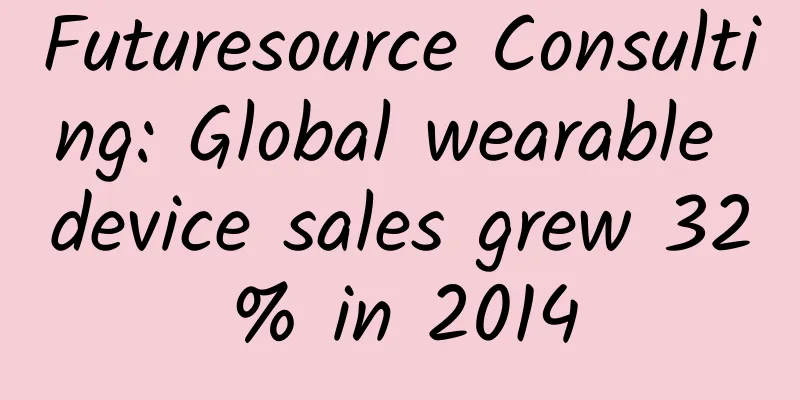Futuresource Consulting: Global wearable device sales grew 32% in 2014

|
199IT original compilation Whether the wearable device market will see huge growth in 2015 remains to be seen, but an Ipsos survey in October 2014 found that wearable devices have better development prospects than other technologies next year. Nearly one in five online Americans plan to buy a wearable device in the next 12 months. That number still lags behind traditional connected devices like smartphones, tablets and laptops by at least 9 percentage points, but is ahead of streaming devices and 4-K TVs (ultra-high-definition televisions). Who are the potential customers for wearables? No doubt: young consumers. 19% of respondents plan to buy a wearable fitness monitor, compared to 31% of those aged 18 to 34. By contrast, less than 15% of older respondents are interested. The same is true for wearable computers: 13% of respondents are interested in buying a wearable computer, but a quarter of millennials plan to buy one in the next year. Male and female consumers are evenly split when it comes to wearable fitness trackers, but for other wearables, men are more than twice as likely as women to be interested. The index shows that both sales and usage of wearable devices have grown strongly this year. In November 2014, Futuresource Consulting predicted that global sales of wearable devices would grow 32% year-over-year to 52 million units this year. In September 2014, Forrester Research predicted that 25% of American Internet users would use wearable devices this year, compared to 14% in 2013. However, forecasts for this emerging market vary widely. Take smartwatches, for example. In September 2014, Generator Research predicted that global smartwatch shipments would reach 5.8 million this year, and 313 million by 2020. A month later, Juniper Research predicted that global smartwatch shipments would reach 1 million in 2014, and 36 million by 2018. The difference is mainly due to different definitions and devices covered, but it also shows that marketers and advertisers need to consult a wider range of wearable device indices when dealing with the market. Compiled from: eMarketer Translator: Sun Ying |
<<: comScore: iPhone's US smartphone market share increased to 43.5% in March-May 2015
>>: Facebook Messenger reaches 1.2 billion monthly active users
Recommend
How to treat grade 3 cervical lesions?
The cervix is the part of the female body that ...
When will menstruation come after giving birth?
Many mothers are more concerned about when their ...
Northerners are generally fatter than southerners. Can we blame the geographical differences?
Friends Have you found Many northerners around me...
Why does my stomach hurt before my period?
Many women do not feel anything before their peri...
Breast pain the day after sex
It is inevitable for couples to have sex. Sexual ...
Female anal tearing pain and blood
Compared with fever and cold, constipation is als...
CivicScience: Survey shows 36% of daily Twitter users are positive about name changes
When Musk announced the rebranding of Twitter as ...
Can I eat glutinous rice during menstruation?
Every woman is familiar with menstruation, which ...
If you can’t find the reason for the numbness in your hands and feet, don’t worry, the secret tool is here!
Author: Zhang Lei Neurology Center, Beijing Tiant...
What should pregnant women do if they take a cold shower?
Pregnant women cannot be stimulated. Once stimula...
Pain and numbness? Lumbar disc herniation can be relieved with a few simple movements →
Lumbar disc herniation is one of the common "...
Low DHEA
Important reminder: If a woman finds that her DHE...
How can people who never gain weight gain weight no matter how much they eat? What is the physique of people who never gain weight?
For those who are trying to lose weight, the most...
At what age do girls' breasts begin to develop?
I believe that many girls want to have charming b...
What causes black spots on the scrotum?
Genital health is something that people should pa...









